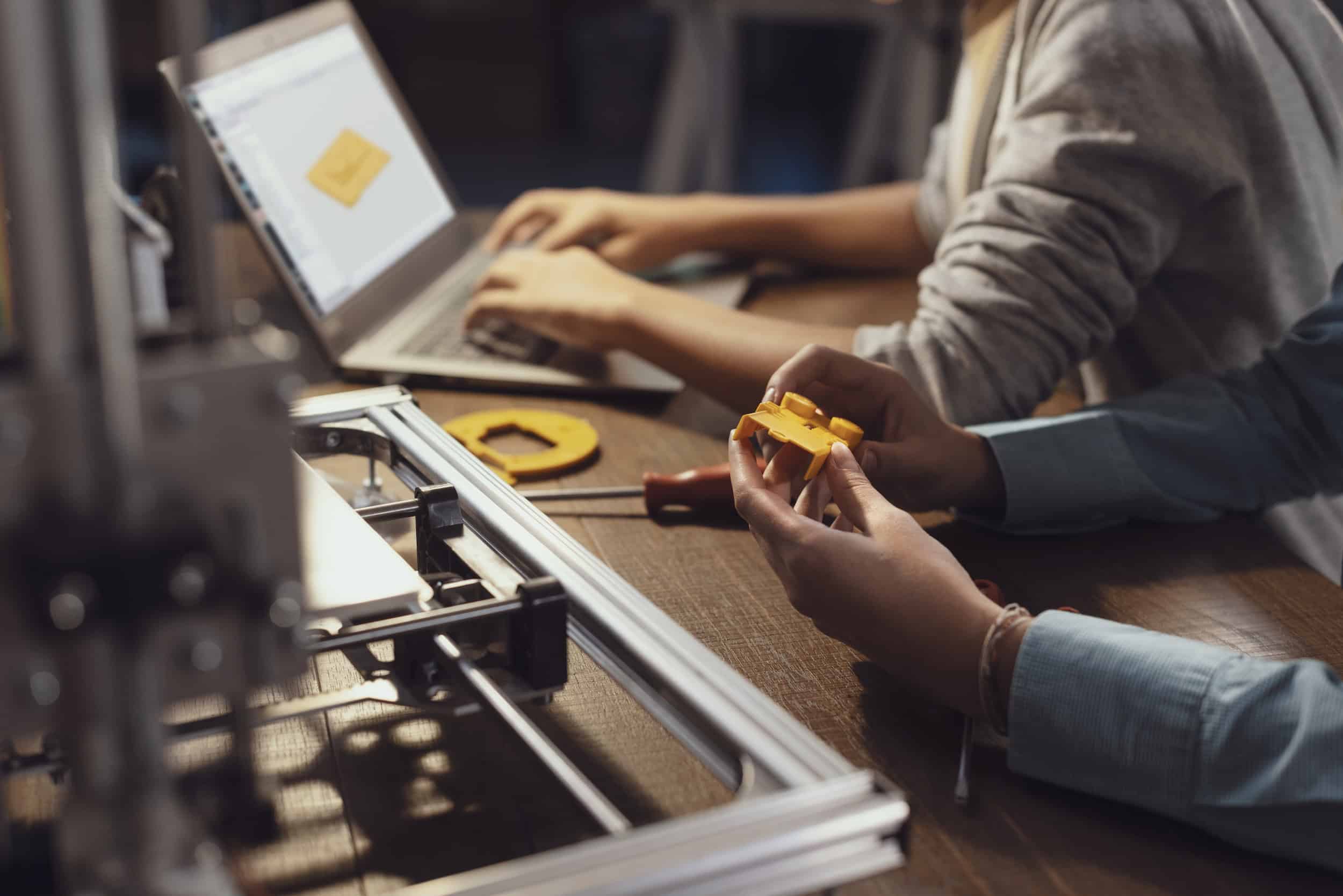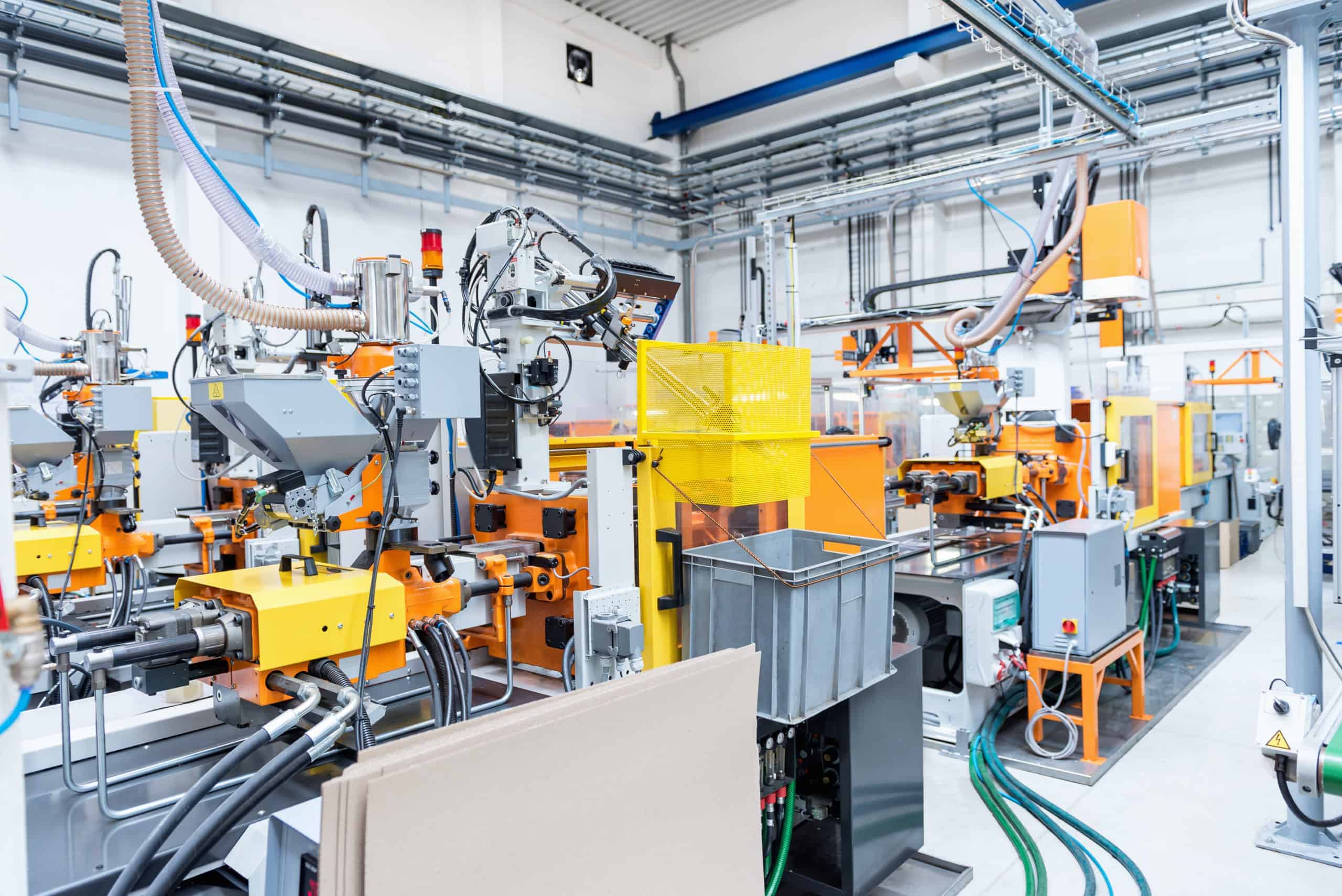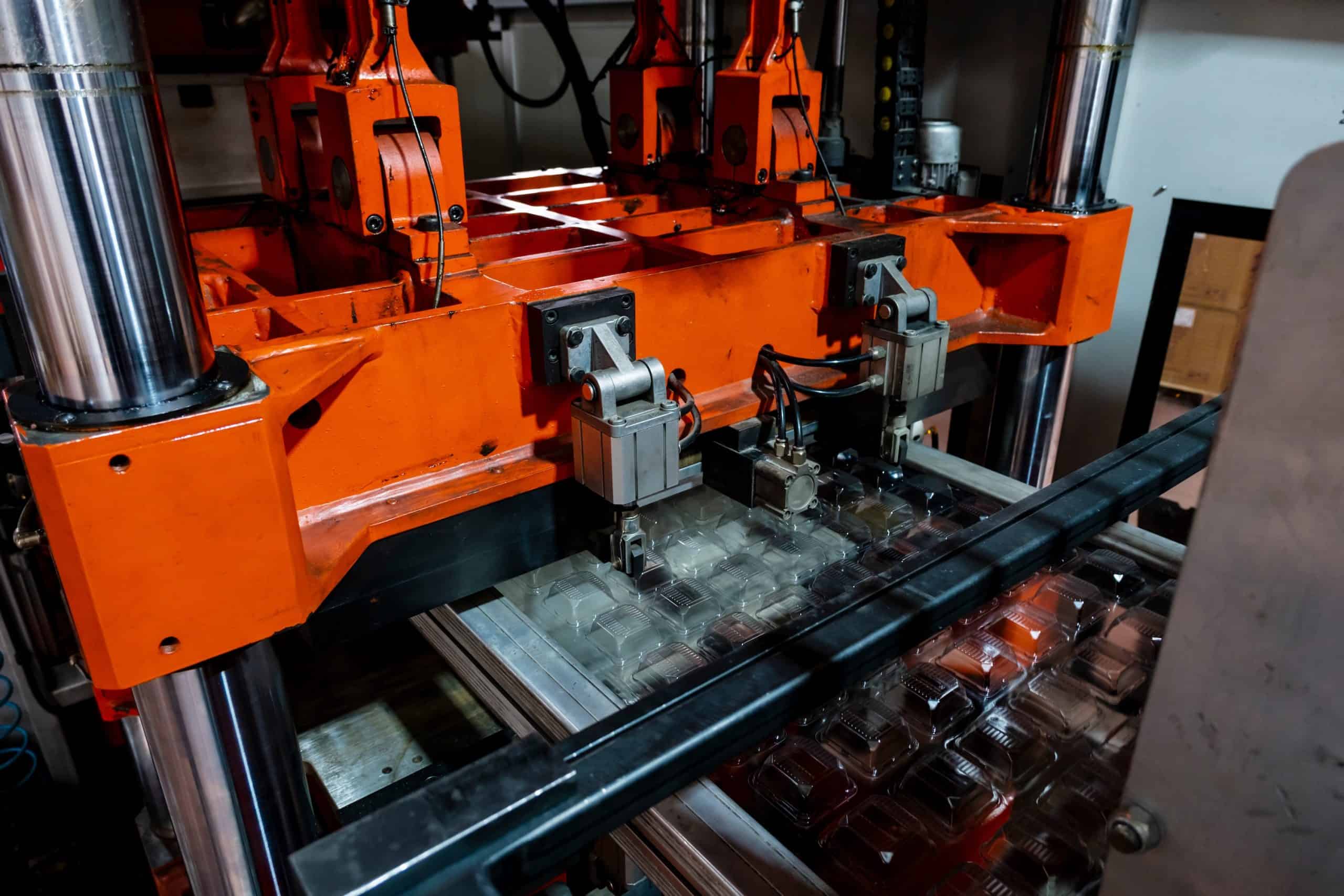3D printing technology enables the creation of mould designs with a level of complexity that traditional mould-making methods, like CNC machining, cannot achieve. Engineers and industrial product designers use such 3D-printed moulds for various casting technologies, including sand casting and investment casting, enabling them to work with a diverse array of materials like metals, plastics, silicones, and even concrete.
By utilising 3D-printed patterns, the casting process becomes faster and more efficient, reducing the need for time-consuming and costly mould production, particularly for prototyping and low-volume manufacturing.
3D Printing vs. Traditional Mould-Making for Casting
When comparing additive manufacturing to traditional mould-making techniques, 3D printing excels in rapid prototyping, complex geometries, and low-volume production, while traditional methods are better suited for high-volume manufacturing with superior material durability and surface quality. 3D-printed moulds offer high precision, faster production times, and cost-effectiveness for small batches, along with easy customisation and enhanced material compatibility, making them ideal for metal and silicone casting.
The table below outlines the key differences between these approaches, highlighting their suitability for various casting applications.
| Factor | 3D Printing | Traditional Manufacturing Process (e.g., CNC Machining) |
| Applications | • Rapid prototyping • Small-batch production • Complex geometries |
• Mass production • Large-scale industrial use |
| Production Time | • Fast for prototyping or custom designs • Slower for large batches |
• Slower for initial mould (longer initial setup time) • Faster for large batches |
| Cost | • Lower for small runs and prototyping • Expensive for large-scale production |
• High upfront cost, but economical for mass production |
| Design Flexibility | • Highly flexible • Easily accommodates complex and intricate designs |
• Limited by machining constraints • Complex designs increase cost and time |
| Materials | • Limited to 3D-printable materials like resin, plastic, and some metals | • Wide variety, including metals, plastics, composites |
| Detail & Precision | • Rougher surface finish • Post-processing may be required |
• Smooth finish • Higher-quality surfaces without much post-processing |
| Surface Finish | • Rougher surface finish • Post-processing may be required |
• Smooth finish • Higher-quality surfaces without much post-processing |
| Durability | • Less durable, especially for high-temperature casting application | • Extremely durable • Suitable for high-heat applications like metal casting |
Technologies and Optimal Casting Applications of 3D-Printed Moulds
3D-printed moulds, like conventional moulds, are hollow forms whose inner surfaces provide the shape for the outer surface of a liquid material, such as metal or plastic. The casting material is poured into the mould and then cooled to a solid to make the final product. Both types of moulds are designed on computers, providing a virtual representation of the mould.
Various 3D printing technologies can be employed to create moulds for casting. The choice of technology often depends on factors such as the casting material, mould complexity, and desired surface finish. The 5 most commonly used 3D printing technologies for mould-making offer unique benefits in terms of cost, resolution, and suitability for different materials:
- For metal casting and high-temperature materials: DMLS is the best option due to its ability to produce durable metal moulds.
- For plastic or resin casting with fine details: SLA or PolyJet are ideal due to their high resolution and surface quality.
- For sand casting moulds or large-format moulds: Binder Jetting excels due to its ability to create large moulds with complex designs.
- For prototyping or simple moulds: FDM is cost-effective and widely used, though it may require more post-processing for a smooth surface finish.

Most Suitable Materials for 3D Printed Moulds
The choice of mould material plays a critical role in determining the durability, accuracy, and compatibility with specific casting processes. High-temperature-resistant polymers and sand-based moulds each offer distinct advantages depending on the casting requirements, such as metal or plastic parts.
The table below outlines the most commonly used materials for 3D printing moulds, comparing their strengths, limitations, and ideal technologies for achieving precise results in various casting applications.
| Mould Material | Advantages | Limits | Suitable Technology | Applications |
| xPEEK Resin | • High mechanical strength and stiffness • Excellent heat resistance (up to 260°C) • Chemical resistance • Low moisture absorption |
• Brittleness limits durability under extreme stress • Less suitable for very high melting point metals like steel |
FDM with high-temperature PEEK filaments | • Moulds for aluminum, gold, and other non-ferrous metals • Applications where high temperature stability is needed |
| xCERAMIC Resin | • Excellent thermal stability • Dimensionally stable at high temperatures |
• Brittle compared to some other materials • Higher material cost • Requires post-processing (sintering) |
Digital Light Processing (DLP) | • Moulds for high-melting-point metals (e.g., steel) • Investment casting cores • High-temperature industrial components |
| Sand | • Cost-effective • Suitable for large-scale casting • Good thermal conductivity |
• Limited surface finish quality • Requires binders for strength • Not suitable for intricate details |
Binder Jetting | • Large metal castings (e.g., engine blocks) • Architectural elements • Sculpture and art pieces |
| Silicone | • High flexibility and elasticity • Excellent detail reproduction • Easy demoulding • Reusable for multiple casts |
• Limited temperature resistance (up to 300°C) • Lower durability for high-volume production • Susceptible to certain solvents |
Multi-Material Jetting (PolyJet) with silicone-like materials | • Prototyping of flexible plastic parts • Low-volume production of complex geometries • Moulds for concrete or resin casting |
| Urethane Resin | • High durability and impact resistance • Excellent surface finish • Good dimensional stability • Vacuum-forming capability |
• Limited heat resistance (up to 120°C) • Sensitive to UV degradation • May require release agents |
SLA with rigid polyurethane resins (e.g. Somos® PerFORM or DSM’s SOMOS® Taurus) | • Functional testing models • Master patterns for silicone moulds |
| ABS-like Resin | • Good balance of strength and flexibility • Suitable for snap-fit assemblies • Smooth surface finish • Cost-effective |
• Limited heat resistance (up to 80°C) • Prone to warping in large parts • May require support structures |
SLA or DLP with ABS-like resins | • Functional plastic prototypes • End-use parts for consumer products • Moulds for low-temperature casting |
| High-Temperature Resin | • Heat resistance up to 300°C • Good dimensional stability • Suitable for metal casting • Chemical resistance |
• Higher cost compared to standard resins • May require specialised printers • Post-curing necessary for optimal properties |
SLA or DLP with high-temperature resins | • Tooling for composite layup • High-temperature testing fixtures |
Technologies like SLS and MJF offer advantages in terms of mechanical properties and the ability to create complex geometries. Combined with materials such as glass-filled nylon and carbon-reinforced polymers, these processes can produce moulds with increased strength, stiffness, and moderate heat resistance. However, these materials come at a higher cost and may require precise handling. Post-processing may also be necessary to achieve the desired surface finish and seal any porosity.
Fused Deposition Modeling (FDM) with standard materials is generally unsuitable for creating moulds for high-temperature applications. The layer-by-layer deposition process often results in porous structures that can leak during casting. Additionally, common FDM materials like PLA or ABS have low heat resistance and may deform or melt when exposed to molten metals or high-temperature resins.
While these additive manufacturing processes may not be ideal for high-temperature metal casting, they can be effective for lower temperature applications, plastic and foam casting, or short production runs when designed and used appropriately.

Best Practices and Design Tips for 3D-Printed Moulds
For 3D-printed moulds, the following is a collection of some best practices and design tips:
- Optimise wall thickness: Check the wall thickness of your mould to ensure it can withstand the casting material without failure. Thin walls, generally considered to be less than 0.8 mm, may be prone to failure. Conversely, walls that are too thick (typically over 3 mm) will unnecessarily waste materials and increase print time. For most 3D printing processes, a maximum wall thickness of 2-3 mm is recommended. It’s crucial to maintain uniform wall thickness throughout the design for optimal results, balancing strength with material efficiency and print duration.
- Design for hollow or solid moulds: Moulds must be hollow to allow for casting material. However, when designing a mould, consider whether it should be a single solid piece or a hollow structure with internal support. Hollow moulds often require internal support during 3D printing to prevent collapse, which must be removed after printing. Conversely, solid moulds are simpler but can be divided into parts for more complex designs. This approach allows for easier modification and handling but also requires careful assembly.
- Incorporate runners and vents: You can print the runner and vent systems directly into the mould. This integration allows for more precise control over the design, ensuring optimal material flow and air escape. When designing for 3D printing, it’s important to account for factors like material shrinkage and printer resolution to ensure that runners and vents function effectively.
- Consider mould splitting: For complex mould designs, carefully choose split lines to ensure ease of part removal. Break the mould into multiple sections if needed, and avoid placing split lines in areas that could damage the cast part or complicate reassembly. Incorporate alignment pins to ensure accurate alignment of mould halves. This approach may also involve using cores to create internal features, enhancing the mould’s functionality and the quality of the final cast piece.
- Post-processing: Determine whether post-processing of the mould will be needed, e.g., cleaning, sanding, or sealing, as the case may be. Even though 3D-printed moulds have good dimensional accuracy, the quality of the surface finish often needs further attention to meet that of the final cast.

3D Print Moulds for Efficient and Precise Casting
3D-printed moulds have enhanced the casting process by offering enhanced precision, faster production times, and cost-effective solutions for both small and large-scale projects. By choosing the right materials, design techniques, and 3D printing technologies, manufacturers can create complex moulds that were once difficult or impossible to achieve with traditional methods.
Have you used 3D printing for mould-making? Share your experiences and insights in the comments!
 Europe
Europe  Türkiye
Türkiye  United Kingdom
United Kingdom  Global
Global 

 Login with my Xometry account
Login with my Xometry account  0
0









Comment(0)